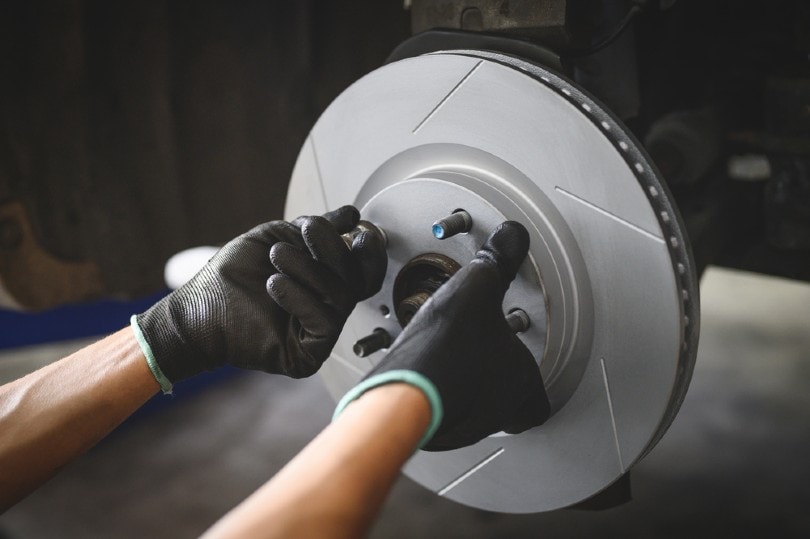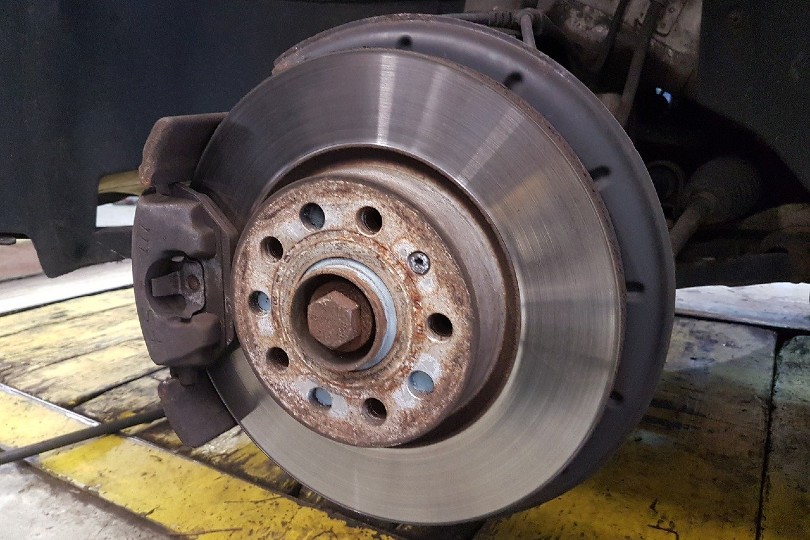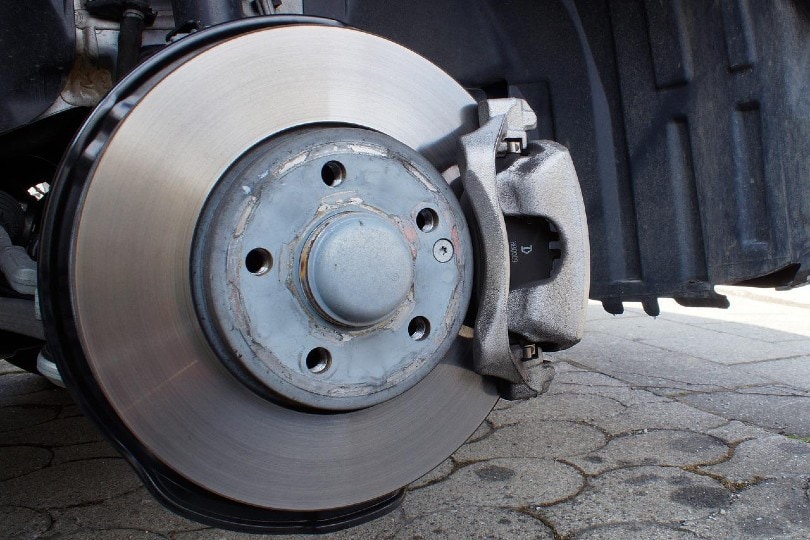When to Replace Brake Rotors? Signs, Facts & FAQs
-
Shea Cummings
- Last updated:

When it comes to brakes, you don’t want to mess around. All the modern safety features that vehicles have are wonderful, but at the end of the day, the brakes are what bring your vehicle to a stop when it needs to.
Luckily, maintenance is straightforward on most of the brake system. While brake pads are only expected to last around 20,000 miles (32,000 km), you can expect most brake rotors to last around 70,000 miles (112,000 km).
Several factors play into rotors wearing out sooner or later than this average, which we will explore below.
Why Do Brake Rotors Wear Out?
We know that a brake rotor is used to stop the car. But to understand why they wear out, we first need to see exactly how they do that.
The simplest explanation is that rotors are connected to your wheels via the wheel hub. When you press the brake pedal, the brake pads squeeze the rotor to stop the wheel from turning. So, like your brake pads, the rotors are subjected to constant wear and tear.
- Friction: The vehicle doesn’t come to a dead stop, so there is a lot of friction as it decelerates. Luckily, the pads are designed to absorb most of the wear created by the friction.
- Heat: As intense friction happens, there is a lot of heat generated. Over time, this heat will start to warp the rotor, especially if it’s a steel rotor.
- Environmental factors: Things like extreme cold or heat can play a role in a rotor’s life. Road salt and grime are other environmental factors at play.
- Metal-on-metal: When the pad wears out, it’s bare metal. If the pads are not changed before this happens, metal-on-metal friction happens when you’re stopping. This is the quickest way to destroy a brake rotor.

Signs the Brake Rotors Need Replacing
There are several ways that you can tell the brake rotors need replacing. Some need a visual inspection, but others you will know by sound and feel.
- Vibration: When braking, if you feel a vibration in the steering wheel or brake pedal, this could be a sign of worn pads or rotors.
- Noise: As a rule, there shouldn’t be much noise when you stop. If there is squealing or grinding, you likely need new pads. If you don’t replace the pads ASAP, you will likely need new rotors if you get to that metal-on-metal braking.
- Cracks: Various things can cause cracking in the rotors. A common reason is because of the extreme heat caused by friction. A little bit of cracking isn’t an emergency. However, depending on how big and long the cracks are could change that. It’s best to have someone experienced have a look.
- Damaged surface: A brake rotor is machined, so it’s smooth. If debris like rocks get stuck between the pads and rotors, it can damage the rotor. Rust and corrosion can also damage the rotor’s surface.
- Warped: Over time, the rotor may begin to warp due to heat and stress. This causes more noise than usual and vibration. If you notice vibrating when braking, you’ll want to ensure your pads are fine. If they are, you’ll want to inspect the rotor closely to make sure it isn’t warped.
Types of Brake Rotors
- Steel rotor: There are different quality levels and types of steel rotors, such as slotted, vented, or cross-drilled. Which ones you get depends on the application. Steel is the most common rotor material. They range in price depending on the vehicle that they are going on. The average lifespan of a steel rotor is 50–70,000 miles.
- Carbon-ceramic: These high-end rotors became popular with the rise of supercars. They offer superior braking and long life. You can expect a carbon-ceramic rotor to last 70,000 or more miles with proper care. There is a significant price increase compared to steel rotors, though.
- See Also: 4 Different Types of Car Brakes
FAQ: Replacing Brake Rotors
Can I change my brake rotors myself?
Changing brake rotors is not an overly advanced task. Most people who are familiar with working on their vehicle can probably manage. One potential problem is that some vehicles require special tools. Some companies rent specialty tools if you’d like to save money and do your own rotors.

Do I really have to replace the rotors?
The rotors are an integral part of your braking system. If they show any signs of wear that we discussed above, they may need changing soon or right away—depending on the severity of the damage.
Do the pads need to be replaced with the rotors?
Brake pads need replacing much sooner than the rotors. So, you won’t always have to change them simultaneously. A good practice is to inspect the rotors every time you change the pads. Quite often, you’ll end up having to change the rotors every three or four sets of brake pads.
Conclusion
Your vehicle’s brake system is nothing to mess around with. It’s important to understand how all the components work together and how to maintain them. There are things you can do to help prolong the life of brake pads and rotors. However, both parts will wear out eventually.
If you can’t change the rotors yourself, find a reputable shop or get several quotes. In most places, brake repairs are pretty affordable. Either way, it’s a necessary cost for safe driving.
Featured Image Credit: Setta Sornnoi, Shutterstock
Contents
